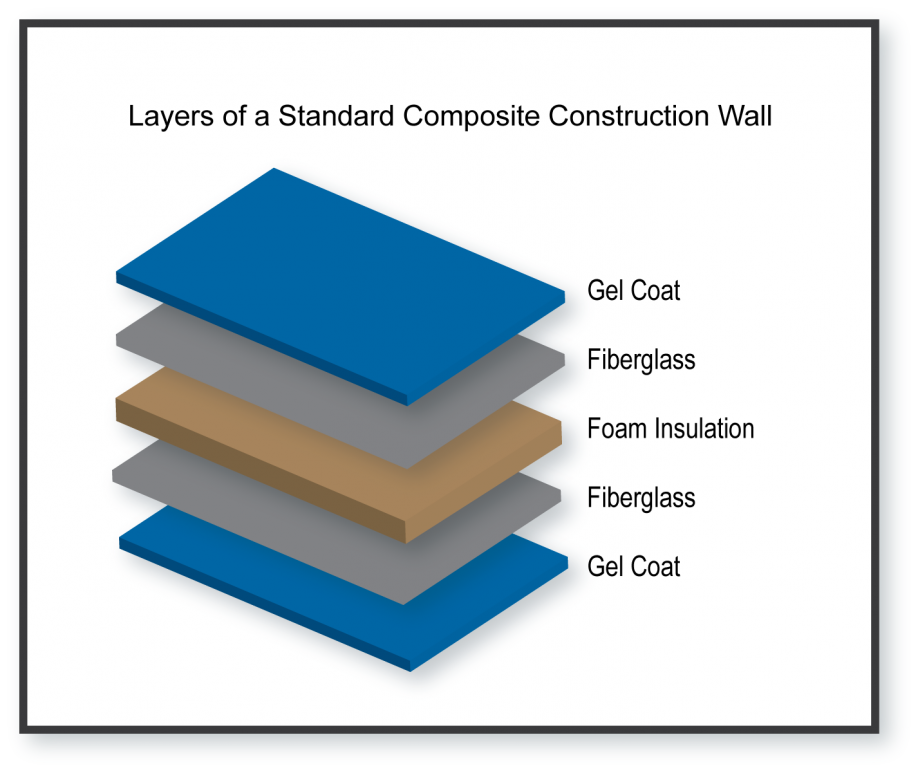High-Performance Composites for Eco-Friendly Building
High-Performance Composites for Eco-Friendly Building
Blog Article
Unlocking the Ecological Advantages of Recycled Composites in Building And Construction and Style
In the world of building and design, the usage of recycled compounds holds considerable assurance for improving sustainability techniques and decreasing ecological impact (composites). By incorporating these cutting-edge materials, there is a potential to attend to vital concerns such as waste minimization, energy conservation, and a reduction in carbon impact. The change in the direction of a more sustainable future in these markets pivots on opening the complete potential of recycled composites. This conversation will check out the complex advantages and challenges connected with integrating recycled composites into building and layout, supplying a peek into the transformative possibilities that lie in advance.

Environmental Influence Decrease
The decrease of ecological effect with the usage of recycled composites in construction and design plays an important duty in sustainable methods. By incorporating recycled compounds right into building materials, the building and construction industry can dramatically lower its carbon impact and contribute to a more environmentally friendly future. These lasting products, made from repurposed plastics, wood fibers, or various other recycled elements, supply a viable option to conventional building and construction products without compromising on high quality or toughness.
Recycled composites aid divert waste from land fills and decrease the demand for extracting raw products, thus preserving natural sources. In addition, the manufacturing procedure of these composites usually takes in much less energy and produces less greenhouse gases compared to generating virgin materials (composites). This change towards utilizing recycled compounds not only lessens environmental harm however additionally promotes a circular economic situation by encouraging the reuse of products that would otherwise be disposed of
Waste Minimization
With an emphasis on minimizing waste in building and style, the integration of recycled composites uses a lasting solution to minimize ecological influence. Waste minimization is an important aspect of sustainable methods, and using recycled composites offers a possibility to achieve this goal properly. By making use of materials that have already served their first purpose, such as recycled plastics or reclaimed wood fibers, the building and style markets can dramatically reduce the amount of waste created and sent out to land fills.
Recycled compounds have the possible to draw away substantial quantities of waste from traditional disposal methods, adding to a more circular economy where resources are utilized effectively. Furthermore, the manufacturing procedure of recycled composites often consumes much less power and generates less emissions contrasted to virgin materials, even more lowering the ecological footprint of building and design projects.
Implementing waste minimization strategies through the unification of recycled compounds not just assists in saving natural deposits but additionally advertises a more lasting strategy to structure and developing for a greener future.
Energy Preservation
Incorporating recycled composites not only minimizes waste in building and design however likewise plays an essential role in improving power preservation methods within the sector. The use of recycled compounds in building can substantially add to power preservation with numerous methods. By advertising the usage of recycled compounds in construction and design, the industry can make significant strides towards accomplishing energy performance and decreasing its carbon impact, ultimately adding to a much more lasting built environment.
Carbon Impact Decrease
Enhancing sustainability techniques with the use of recycled compounds in building and construction and layout considerably minimizes the carbon footprint of the industry. By integrating recycled materials right into the production of compounds, the requirement for virgin sources reduces, causing reduced power usage and greenhouse gas exhausts connected with site here standard production procedures. This decrease in carbon footprint is important in combating environment change and promoting an extra ecologically pleasant strategy to building and construction and design.
Additionally, making use of recycled composites also helps in drawing away waste from land fills, therefore mitigating the ecological influence of disposal and promoting a round economic situation. The carbon footprint reduction achieved with the fostering of recycled composites lines up with the global push towards sustainable practices and the decrease of industrial exhausts. It showcases a informative post commitment to responsible source monitoring and a change towards greener alternatives in the building and construction and layout fields. Ultimately, by prioritizing the combination of recycled composites, the industry can make considerable strides in lowering its carbon footprint and adding to an extra lasting future.
Sustainable Future
The assimilation of recycled compounds in building and construction and design not only addresses immediate ecological problems yet also lays a solid structure for a lasting future in the market. By integrating recycled composites into structure materials and products, the building and construction and style fields can substantially reduce their reliance on virgin sources, leading to a much more circular economic situation. This change in the direction of sustainability is vital for minimizing the ecological effect of traditional construction practices, which typically cause high levels of waste generation and resource deficiency.

Final Thought
In conclusion, recycled compounds offer substantial ecological benefits in construction and style by lowering environmental impact, decreasing waste, preserving power, reducing carbon impact, and promoting a lasting future. Embracing making use of recycled compounds can add to a more environmentally-friendly technique to building and style, eventually resulting in an extra sustainable and greener future for all.
The decrease of ecological impact through the usage of recycled compounds in building and layout plays an essential function in sustainable methods.With a focus on decreasing waste in building and construction and layout, the assimilation of recycled compounds offers a lasting remedy to minimize environmental impact. By promoting the use of recycled composites in construction and style, the market can like this make substantial strides in the direction of achieving energy efficiency and lowering its carbon footprint, inevitably contributing to an extra lasting developed setting.

Report this page